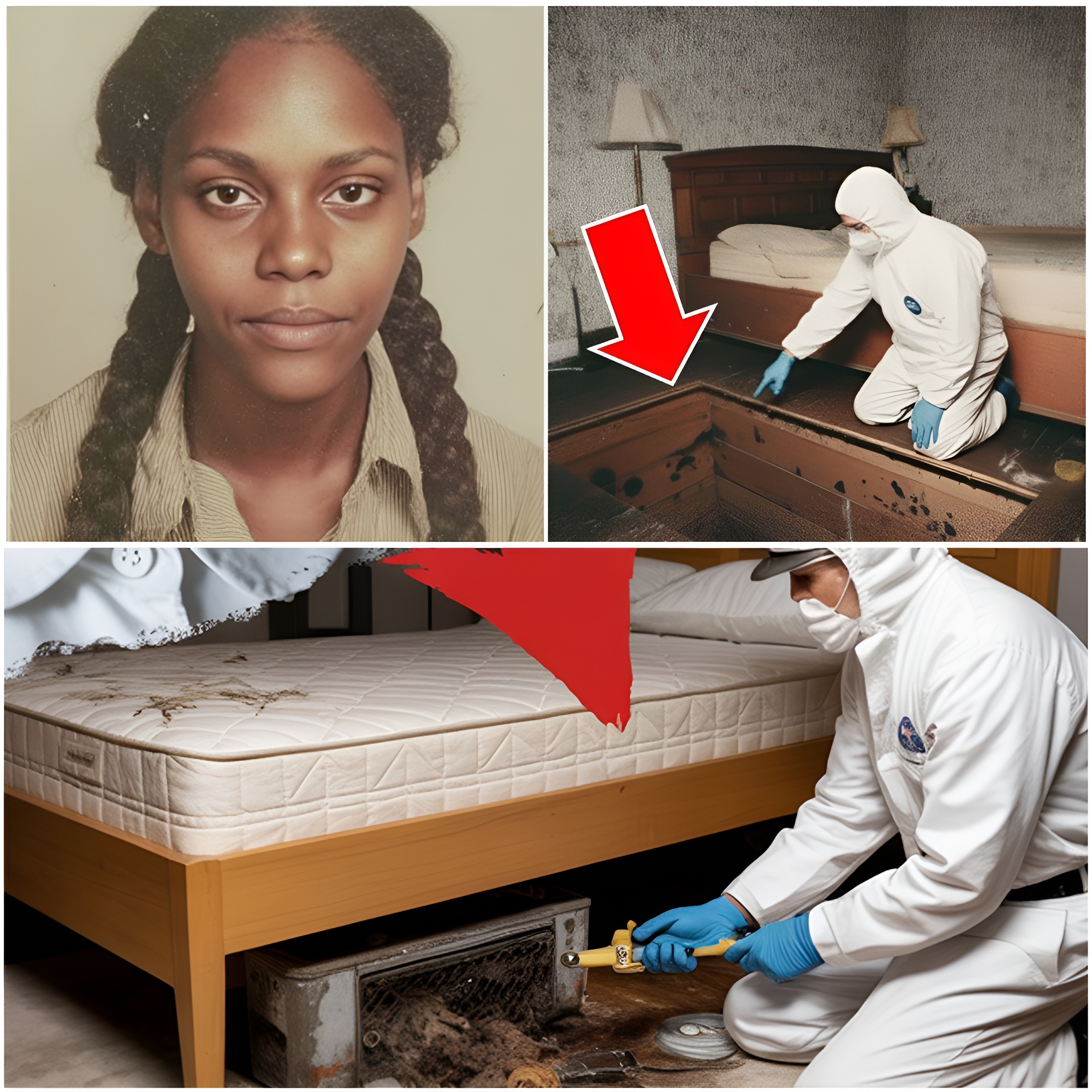Every year on her daughter’s birthday, Martha Monroe would walk to a quiet park in South Atlanta, hold the string of a single, bright yellow balloon, and let go. For seven years, she watched it climb into the sky, a vibrant speck of hope against an overwhelming expanse of gray uncertainty.
It was a silent, heartbreaking ritual, a mother’s promise to a ghost. Her 19-year-old daughter, Kesha, had vanished in the autumn of 1982, and while the city moved on and the police files gathered dust, Martha’s vigil never wavered. She didn’t know that the answer to her seven-year prayer was lying in wait, tucked away in a dark, wooden box beneath an unassuming stranger’s bed.

In 1982, Kesha Monroe’s future was a canvas of limitless potential. A bright and ambitious sociology major at the prestigious Spelman College, she was a young woman with a fierce intellect and a compassionate heart.
Raised by her mother, a resilient and loving seamstress, Kesha was instilled with a sense of purpose. She dreamed of working with community programs, of being a force for change. She was careful and smart, the kind of daughter who called home from the campus payphone just to say she was on her way.
That last phone call came on a chilly Tuesday in late October. “I’m heading to the bus stop now, mama,” she said, her voice bright. “I made your favorite chicken and dumplings,” Martha replied. “I love you.” “I love you more.” It was the last time Martha would ever hear her daughter’s voice.
At the bus stop, a sudden, cold drizzle began to fall. The bus was late. As Kesha pulled her jacket tighter, a plain beige sedan pulled up to the curb. The man inside was the picture of harmlessness—middle-aged, with a tired face, a man who could have been anyone’s father.
He offered her a ride to get out of the rain, his voice even and polite. Kesha, mindful of her mother’s warnings about strangers, politely refused.
But the man was a masterful predator. He didn’t press. Instead, he used the one tactic designed to dismantle her defenses. “It’s just,” he said with a slight, fatherly sigh, “my own daughter is about your age… I’d hate to think of her standing out in a cold rain like this.”
He had created a connection, a bubble of safe, ordinary conversation. He wasn’t a stranger anymore; he was a fellow father. Kesha’s caution gave way to practicality. She got in the car.
He introduced himself as Leonard Price. He asked about her studies, mentioned his own “daughter” who was studying nursing, and expertly maintained the facade of a kind stranger doing a good deed. But then came the first wrong turn.
Then a second, leading them away from the main road and into a warren of quiet, unfamiliar streets. The bubble of normalcy popped, and cold dread rushed in. She reached for the door handle. It was locked. The man’s friendly demeanor vanished, replaced by a chilling, absolute silence.
He just kept driving, his impassivity more terrifying than any threat. Kesha Monroe had been swallowed by the city.
The police investigation, led by a sharp detective named Lorraine “Rainey” Baldwin, hit a wall almost immediately. There were no witnesses to the abduction, no signs of a struggle, no dropped purse or abandoned book. The beige sedan and the phantom “Leonard Price” were ghosts.
In a city the size of Atlanta, Kesha had simply evaporated. The case soon went cold, a frustrating file that haunted the detective’s desk for years.
For Martha, life became a quiet, agonizing wait. She refused to pack away Kesha’s things, leaving her bedroom as a perfect shrine to the life that had been interrupted. She called the detective weekly, then monthly. And every year, she released her yellow balloon, a stubborn act of faith against a silent sky.
The answer, when it finally came, arrived seven years after Kesha disappeared, not from a police tip, but from a place of quiet domesticity. A young couple had bought an old, unassuming house from the estate of a reclusive man who had recently died of natural causes.
While renovating a bedroom, they discovered a loose floorboard beneath the space where a bed had clearly sat for decades. Underneath, they found a heavy, locked wooden box.
Prying it open, they discovered a horrifying secret library of a predator’s life. The box was filled with the trophies of a serial killer. There were dozens of driver’s licenses, pieces of jewelry, and Polaroids of women, their faces frozen in fear.
And tucked among the chilling artifacts was a Spelman College student ID card with a smiling, hopeful face. It was Kesha Monroe. Next to it lay a small silver watch, the one Martha had given her for her 19th birthday.
The box also contained a series of meticulous, handwritten journals. The homeowner, who had kept a detailed chronicle of his crimes, was the same man who had owned the house: Leonard Price. He was the gray man, the invisible predator who had lived and died without ever facing justice for his horrific deeds.
The discovery was a devastating end to Martha Monroe’s long vigil. After seven years of torturous uncertainty, she finally had an answer. Her daughter’s killer had been identified, his evil unmasked. The knowledge was a brutal, heartbreaking form of peace.
The following year, on Kesha’s birthday, Martha went to the park one last time. She held the string of a single yellow balloon, looked up at the sky, and finally, after seven long years, let her daughter go.
